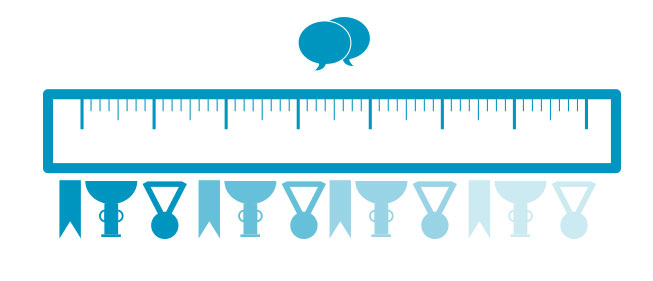Hospital Rankings: Consumers – and Hospital Marketers – Beware

As consumers learn (some by choice and some by necessity) to “shop” for both health insurance and healthcare, new models for payment and selection are forcing greater transparency. At the same time, social and online reviews, as well as formalized comparison tools and reports proliferate. There’s even been a “Hospital Price Transparency (Apps and Tools) Challenge,” which awarded $50,000 to the winning tool.
But just as all healthcare transparency is not created equal, the tools and rankings that claim to show how providers stack up aren’t created equal, either. Therefore, it’s important for consumers to understand what they’re measuring and how well they’re doing it… and for hospital leaders to strategize about how to utilize the rankings in their marketing efforts (if at all).
This fall, the Healthcare Association of New York State (HANYS) published “Report on Report Cards: Understanding Publicly Reported Hospital Quality Measures.” In the report’s executive summary, HANYS says, “Supporters of hospital ‘report cards’ promote them as a means to improve the overall quality of care and help people make more informed healthcare choices. However, these goals are thwarted by multiple reports with conflicting information and dramatically different ratings.”
The HANYS press release on the report further explains the confusion: “Multiple organizations issue grades or report cards on hospital performance. Each uses a different approach, generating varied scores for the same hospital, leaving it unclear to the public what scores, if any, are accurate indicators of performance.” In other words: reader beware.
HANYS President Dennis Whalen says, “What hospitals and patients need and deserve is a standardized, accurate, clinically-based method of [evaluating] hospital quality,” and HANYS has proposed a set of “guiding principle to which report cards should adhere.” They include:
- using measures that are “rooted in science,”
- making methodologies/analyses transparent, and
- relying on quality data (which means, among other things, it should be current and evidence-based, reviewed for integrity, come from clinical sources – not from administrative sources or survey data – within similar populations and reporting periods).
The primary focus of the HANYS report is the utility of rankings for hospitals and providers, but the organization notes, “A standardized method of evaluating hospital quality becomes even more critical as publicly available reports garner renewed attention from patients and providers, as well as payers and purchasers of healthcare.” For example, one of the most well-known reports is the annual report on best hospitals from U.S. News and World Report… yet it earned only a half star, HANYS’ lowest ranking. Another popular report – Healthgrades’ “America’s Best Hospitals” – earned only a single star. Four rankings received the highest ranking from HANYS (three starts): The Joint Commission “Quality Check,” the “Hospital-Acquired Infection” report from the NYS DOH, the CMS “Hospital Compare” and the NYS DOH “Hospital Profile” (quality section).
It’s tempting, of course, for hospital leaders to boast about positive rankings from the more popular reports even if those reports aren’t based on the most solid data. And when it comes to not-so-great rankings from those same reports? It’s just as easy to dismiss them… precisely because of their flimsy foundations. However, with the increased emphasis on rankings and reviews (as consumers research and shop for care), hospitals and health systems can’t afford confusion.
So what do hospitals promote: rankings that truly reflect quality or those with mass appeal? While it’s not necessary to ignore lists and ratings built on weak criteria, hospital leaders and marketers ought to resist leaning on them too heavily. Instead, we recommend working to educate consumers about the rankings that are most meaningful and investing in demonstrating the kinds of measures and levels of accountability the hospital itself values. An aggressive content marketing strategy – rich in both story and data – is an excellent place to begin. And as consumers get more discerning about rankings and hospitals promote solid data of their own, lists and ratings will be pushed toward more valuable insights.






